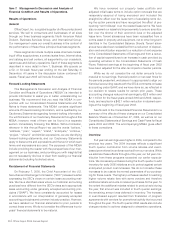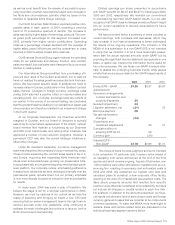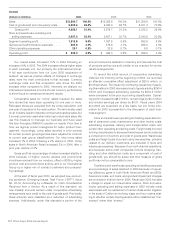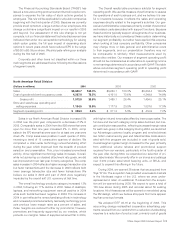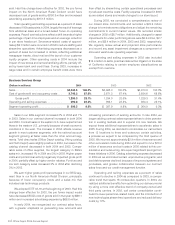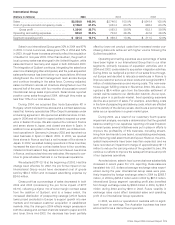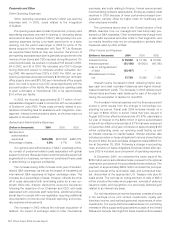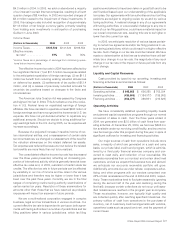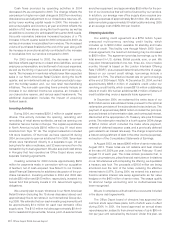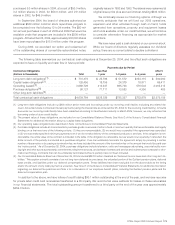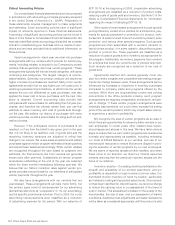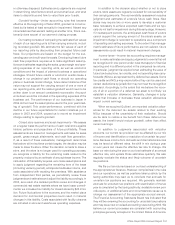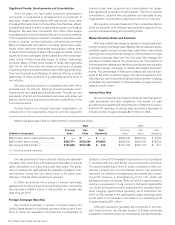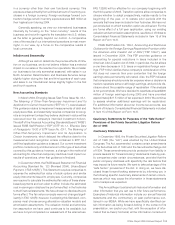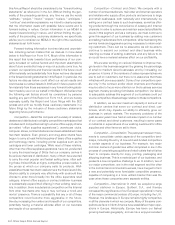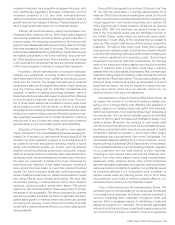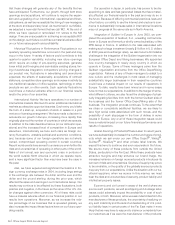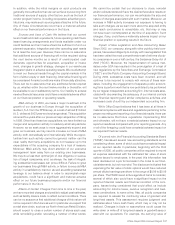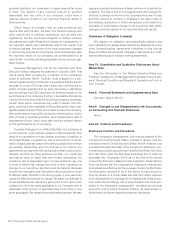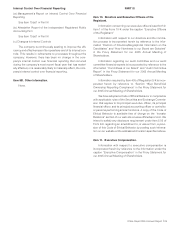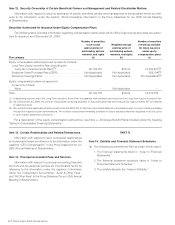Office Depot 2004 Annual Report Download - page 32
Download and view the complete annual report
Please find page 32 of the 2004 Office Depot annual report below. You can navigate through the pages in the report by either clicking on the pages listed below, or by using the keyword search tool below to find specific information within the annual report.30 |Office Depot 2004 Annual Report
Critical Accounting Policies
Our consolidated financial statements have been prepared
in accordance with accounting principles generally accepted
in the United States of America (i.e., GAAP). Preparation of
these statements requires management to make judgments
and estimates. Some accounting policies have a significant
impact on amounts reported in these financial statements.
A summary of significant accounting policies can be found in
Note A in the Notes to Consolidated Financial Statements. We
have also identified certain accounting policies that we consider
critical to understanding our business and our results of oper-
ations and we have provided below additional information on
those policies.
Vendor arrangements—Each year, we enter into purchase
arrangements with our vendors which provide for certain pay-
ments, including rebates, to be paid to our Company by certain
vendors, that we generally refer to as “vendor programs.” These
arrangements typically fall into two broad categories, with some
underlying sub-categories. The largest category is volume-
based rebates. Generally, our product costs per unit decline as
higher volumes of purchases are reached. Many of our vendor
agreements provide that we pay higher per unit costs prior to
reaching a predetermined milestone, at which time the vendor
rebates the per unit differential on past purchases, and also
applies the lower cost to future purchases until the next mile-
stone is reached. Current accounting rules provide that
companies with a sound basis for estimating their full year pur-
chases, and therefore the ultimate rebate level, can use that
estimate to value inventory and cost of goods sold through-
out the year. We believe our history of purchases with many
vendors provides us with a sound basis for using such an esti-
mation process.
However, if the anticipated volume of purchases is not
reached, or if we form the belief in any given point in the year
that it is not likely to be reached, cost of goods sold and the
remaining inventory balances are adjusted to reflect that
change in our outlook. We review sales projections and related
purchases against vendor program estimates at least quarterly
and adjust these balances accordingly. While vendor rebates
are recognized throughout the year based on judgment and
estimates, the final amounts due from vendors are generally
known soon after year-end. Substantially all vendor program
receivables outstanding at the end of the year are collected
within the three months immediately following year-end. We
believe that our historic collection rates against vendor pro-
grams provides a sound basis for our estimates of anticipated
vendor payments throughout the year.
We also have arrangements with our vendors that are
event-based. These arrangements can take many forms, but
two primary types cover (i) reimbursement for our advertising
(sometimes referred to as “cooperative” or “co-op” advertising)
and (ii) specific promotional activities. Prior to 2003, the co-op
advertising reimbursements were classified as a reduction
of advertising expense for the period. With our adoption of
EITF 02-16 at the beginning of 2003, cooperative advertising
arrangements are classified as a reduction of product costs,
reducing costs of goods sold and inventory. See Note C of the
Notes to Consolidated Financial Statements for information
regarding the impact of adopting EITF 02-16.
Other types of event-based arrangements include special
pricing offered by certain of our vendors for a limited time, pay-
ments for special placement or promotion of a product, reim-
bursement of costs incurred to launch a vendor’s product, price
protection, and various other special programs. Such special
programs are often associated with a vendor’s decision to
launch a new product, or in some cases to, discontinue a given
product or product line. These payments are classified as a
reduction of costs of goods sold or inventory, as appropriate for
the program. Additionally, we receive payments from vendors
for activities that lower the vendor’s cost of product shipment.
Such receipts are recognized as a reduction of our cost of
goods sold.
Agreements reached with vendors generally cover one
year, but vendor program and cooperative advertising arrange-
ments can change between years. These arrangements can be
influenced by increases or reductions in inventory purchases
compared to company plans and programs offered by the
vendors. While there are long-standing volume and pricing
conventions in the office products industry, such program
arrangements are regularly renegotiated, and as such, are sub-
ject to change. If these vendor program arrangements were
materially less beneficial, we could either increase the selling
price of the vendor’s product, which may impact sales volume,
or experience a decline in profitability.
We recognize the area of vendor programs as an area in
which there are opportunities for abuse by either vendors or our
own employees. In recent years, other retailers have experi-
enced issues and abuses in this area. We have taken various
steps to ensure that our own vendor programs are operated as
honestly and appropriately as possible, including extending
our Code of Ethical Behavior to our vendors, and use of our
internal audit resources to ensure that we are diligent in polic-
ing the operation of vendor programs by our own employees.
We are aware of reported abuses at other retailers, and when
these come to our attention, we direct our internal resources
towards ensuring that the particular reported abuses are the
focus of our attention.
Inventory valuation—Our selling model is predicated on the
breadth and availability of our product assortment, and our
profitability is dependent on high inventory turnover rates. Our
merchants monitor inventory on hand by location, particularly
as it relates to trailing and projected sales trends. Once a prod-
uct has been identified for discontinuance, we record a charge
to reduce the carrying value to our assessment of the lower of
cost or market. This assessment is based on the quality of the
merchandise, the rate of sale, and our assessment of market
conditions. Additional cost adjustments and sales markdowns
will be taken as considered appropriate until the product is sold


